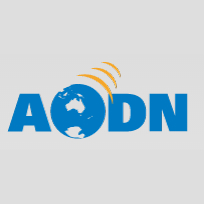Brief description
The Animal Tagging Sub-Facility of the IMOS Animal Tracking Facility (formerly known as the Australian Animal Tracking And Monitoring System (AATAMS)) is a coordinated marine animal satellite-tracking project. Satellite Relay Data Loggers (SRDL) (most with Conductivity-Temperature-Depth (CTD) sensors, and some with CTD/fluorometers) are used to explore how marine animals (e.g. mammals) interact with their oceanic environment. The primary focus of this program is to collect CTD data from marine mammals, such as southern elephant seals (Mirounga leonina) and Weddell seals (Leptonychotes weddellii), in the southern Indian Ocean and along the East Antarctic coast. This is achieved through international collaborations with the French national polar program's long-term National Observatory Services: Mammals as Ocean Bio-Samplers (SNO-MEMO), the National Institute of Water and Atmospheric Research as part of the Ross Sea Research and Monitoring Programme, and the CNES (Centre National d'Etudes Spatiales) TOSCA programme (Phoques de Weddell bio-oceanographes de la banquise antarctique et outils satellites) in Terre Adelie. SRDL loggers developed at the Sea Mammal Research Unit (SMRU, University of St Andrews, UK) transmit data in near real time via the Argos satellite system. This metadata record, represents several different datasets listed hereafter, which can all be accessed through a multi-WFS service. The data represented by this record are presented in near real-time. CTD - parameters measured by the instruments include time, depth, conductivity (salinity), temperature, speed and fluorescence (available in some deployments). Diving - parameters measured by the instruments include individual dive start and end time, longitude/latitude at dive end time, post-dive surface duration, dive duration, maximum dive depth, intermediate dive depths and times. Haulout - a haulout begins when the SRDL has been continuously dry for a specified length of time (usually 10 minutes). It ends when continuously wet for another interval (usually 40 seconds). Haulout data parameters measured by the instruments include haulout start and end dates and longitude/latitude, and haulout number. Argos Locations - location data parameters measured by the instruments include time, longitude, latitude, location quality, along with other diagnostic information provided by Argos (http://www.argos-system.org/). Summary Statistics - as well as sending records of individual events such as dives and haulouts, the SRDL also calculates summary statistics of those events over a specified time period (usually 3, 4 or 6 hours). Summary statistics computed by the instruments include the proportion of time spent diving, at the surface and hauled-out, the number of dives, and the average, standard deviation and maximum dive duration and dive depth during each summary period. These statistics are based on all the data recorded by the SRDL and thus are not prone to distortion by variations in the efficiency of transmission via Argos. SSM QC Locations - SSM-predicted locations and uncertainty at 6-h intervals from the location quality-control process. SSM-predicted locations are also appended to records in the CTD, Diving, Haulout, Argos Locations, and Summary Statistics datasets. See Jonsen et al. 2020 for further details on the SSM used for location quality controlLineage
Maintenance and Update Frequency: asNeededNotes
CreditIntegrated Marine Observing System (IMOS). IMOS is a national collaborative research infrastructure, supported by Australian Government.
Sydney Institute of Marine Science (SIMS)
French National Center for Scientific Research (CNRS)
Macquarie University
University of Tasmania (UTAS)
Australian Antarctic Division (AAD)
National Institute of Water and Atmosphere (NIWA)
CSIRO Oceans and Atmosphere
Stockholm University (SU)
Shanghai Ocean University
Hokkaido University
Issued: 24 06 2020
Data time period: 2019-12-24
text: uplimit=150; downlimit=0
User Contributed Tags
Login to tag this record with meaningful keywords to make it easier to discover
(Animal Tracking page on IMOS website)
uri :
http://imos.org.au/animaltracking.html![]()
(View profile plots from Oceancurrent SealCTDs page)
uri :
http://oceancurrent.imos.org.au/aatams.php![]()
(OGC WFS help documentation)
uri :
https://help.aodn.org.au/web-services/ogc-wfs/![]()
(Jonsen et al. 2018 paper)
doi :
https://esajournals.onlinelibrary.wiley.com/doi/10.1002/ecy.2566![]()
(Jonsen et al. 2020 paper)
uri :
https://movementecologyjournal.biomedcentral.com/articles/10.1186/s40462-020-00217-7![]()
(Best Practice Manual for SMRU CTD Satellite Relay Data Loggers)
global : 4637bd9b-8fba-4a10-bf23-26a511e17042
- global : b2548767-514f-4a31-b65e-36bb894382d5


